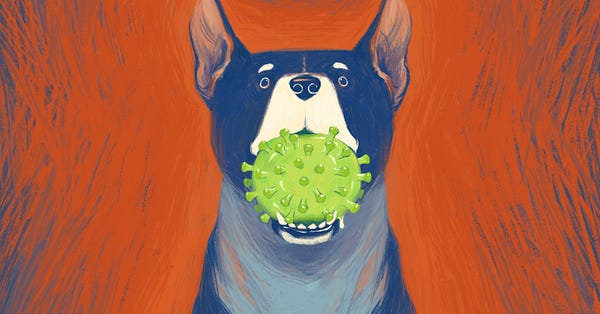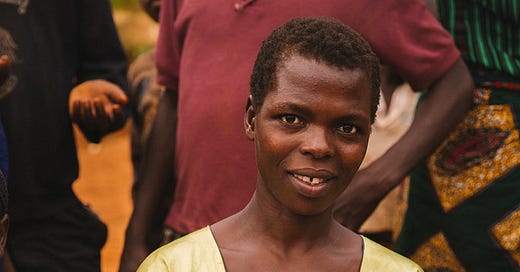Maize has made its way around the world. In the Midwest, I grew up on sweet corn, corn bread, and corn syrup; in Malawi, everyone asked me eagerly if I’d tried nsima yet, the maize-flour-based staple food, made to stick to your ribs and soak up all your ndiwo (the salty, juicy, cabbage and tomato side-dish).
What makes maize stick, not just to the belly but to the worldwide palate? Why does it show up in global cuisines far more often than teff, for example (the stuff Ethiopian injera (a.k.a. dreams) is made of)? Why does some 90% of the global human diet center on around 100 plant species (out of the thousands of viable food plants available?)1
It all comes down to a simple, but deceptively complex question: why do people grow the crops they do?
And the answer, according to a recent study, is: well, a a lot of reasons, of course. But also: there’s a “first come, first served” dynamic at play. The older the domestication, the more likely that crop is to be globally consumed today. We stick with — and spread — what works.
And some of the reasons make a lot of intuitive sense. Humans tend to live in areas with moderate temperatures and moderate rainfall — so crops that thrive in those environments also predominate. For example, woody fruits like apples (growing in cool, seasonal temperatures) have become major, global crops, rather than the non-seasonal, tropical betel nut.
But even when you control for those factors, an antiquity-based bias shines through. The earlier the domestication, the more relevant the crop tends to be today.
Compared to hunter-gatherers, people in agricultural societies dine from a much narrower menu. Agriculture acts like a funnel — instead of foraging what’s around you, you place your bets on a few species under your (tenuous) control.
Why does this bias matter? It may have actually kept us from exploring other options. Robin Allaby, from the University of Warwick, writes that humans may have set their sights “more narrowly than they could have as a consequence of legacy. […T]here may be a plethora of crops out there which have not yet been used to their full potential, simply because another crop got there first.”2
When I read this, I imagined a Russian nesting doll — a choice bunked within the previous choice, constraining the next set of options.
And here I connect dots in two different directions, with no satisfying conclusion, just questions:
Another study I stumbled on this week suggests that our current crop choices just aren’t going to cut it in the coming decades. A University of Cambridge team argues we can’t keep relying on (relatively few) crops out of the thousands of viable forms of nutrition on earth. They advocate instead for farming foods right under our noses: proteins from fungi and kelp, single-celled algae such as chlorella, and also house fly larvae(!).
I also can’t help but think about dogs (always). They’re so knitted in the human loom, it’s hard to find where the skein begins — is it 15,000 years long? 36,000 years? 40,000 years? We debate; we discover; we debate more. The main thing we know is the yarn is long, so very long, longer than anybody else’s. By the time we were raising the first crops 11,000 years ago, dogs had already been hanging out with us for millennia. Now, they number in the hundreds of millions3, everywhere but Antarctica. (But of course, they’ve tagged along with us there too, and are now banned from the continent, for fear they might introduce distemper to seals.)4
I write this with my hounds beside me (my Chalo at my feet, my Priya by my side.) If there’s an antiquity-based bias in domesticated crops, I wouldn’t be surprised if the same is true with our domesticated animals.
I love a good cob of corn; I adore a good dog. The bias is writ on me like a palimpsest, scribbled by culture, tattooed all over my heart.
seen around this week
After learning that elephants have TWICE as many functional olfactory receptor genes as dogs, I keep trying to imagine what their sensorial worlds must be like. All I’ve come up with is: it’s so far beyond my fathoming, it’s like trying to dream up a new color. (Also, soon as I get a little acreage, it’s over: I’m training a bottle calf to do nosework.)


The tendency to see dogs as either a) subjects of affection or b) vectors of disease depends largely on where you live. A year and a half ago, I would’ve said that exact sentence and been thinking of rabies — which remains a dead-serious threat. I never would’ve dreamed of this:


Milla, Rubén and Colin P. Osborne. (2021). “Crop origins explain variation in global agricultural relevance.” Nature Plants 7: 598-607.
Allaby, Robin. (2021). “First come, first served for ancient crops.” Nature Plants 7: 543.
Gompper, Matthew E. (2013). "The dog–human–wildlife interface: assessing the scope of the problem". In Gompper, Matthew E. (ed.). Free-Ranging Dogs and Wildlife Conservation. Oxford University Press. pp. 9–54. ISBN978-0191810183.
https://www.bas.ac.uk/about/antarctica/environmental-protection/wildlife-and-plants-2/removal-of-the-sledge-dogs/




